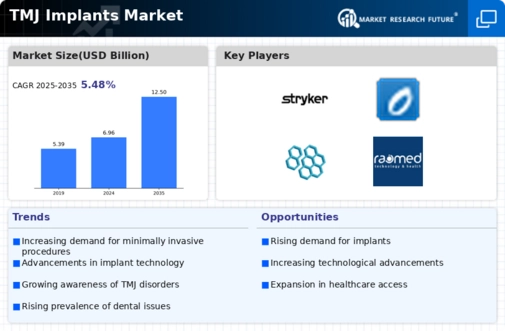Market Trends
Key Emerging Trends in the TMJ Implants Market
The surgery to fix issues with the temporomandibular joint (TMJ) has been very successful. This success is likely to make more countries, especially those without a lot of advanced medical tools, interested in using this procedure. As more people are having problems with their TMJ, the need for implants to help them is going up. There's a chance here for companies to make and sell these implants at prices more people can afford.
People nowadays care a lot about their health. That's why companies are working hard on research and development to make better options for TMJ implants. They want to be better than other companies. Big companies are making smart choices that are changing how the TMJ implants market works globally. They're teaming up with other companies, buying them out, and working on more advanced technology.
These companies are also trying to spread their business. They're appointing distributors to sell their products in more places around the world. This helps them reach more people who might need these implants.
One good idea for companies making these implants is to produce them in one country and sell them in other countries. This can be a good strategy. Some developing countries like India, Argentina, Brazil, China, Indonesia, Saudi Arabia, and the UAE are doing better economically. Their governments are putting a lot of money into health programs. With more people in these countries, there's a big demand for these implants.
Big companies that work worldwide can partner with the governments of these countries to sell their products there. Right now, most of the market for these implants is in rich countries. But if these companies start selling in developing countries, it could help make these implants cheaper because they can make a lot more of them.
So, making new implants and selling them in different countries could be a big opportunity for the companies that make them. This could mean good growth for these companies in the global market for TMJ implants.








Leave a Comment